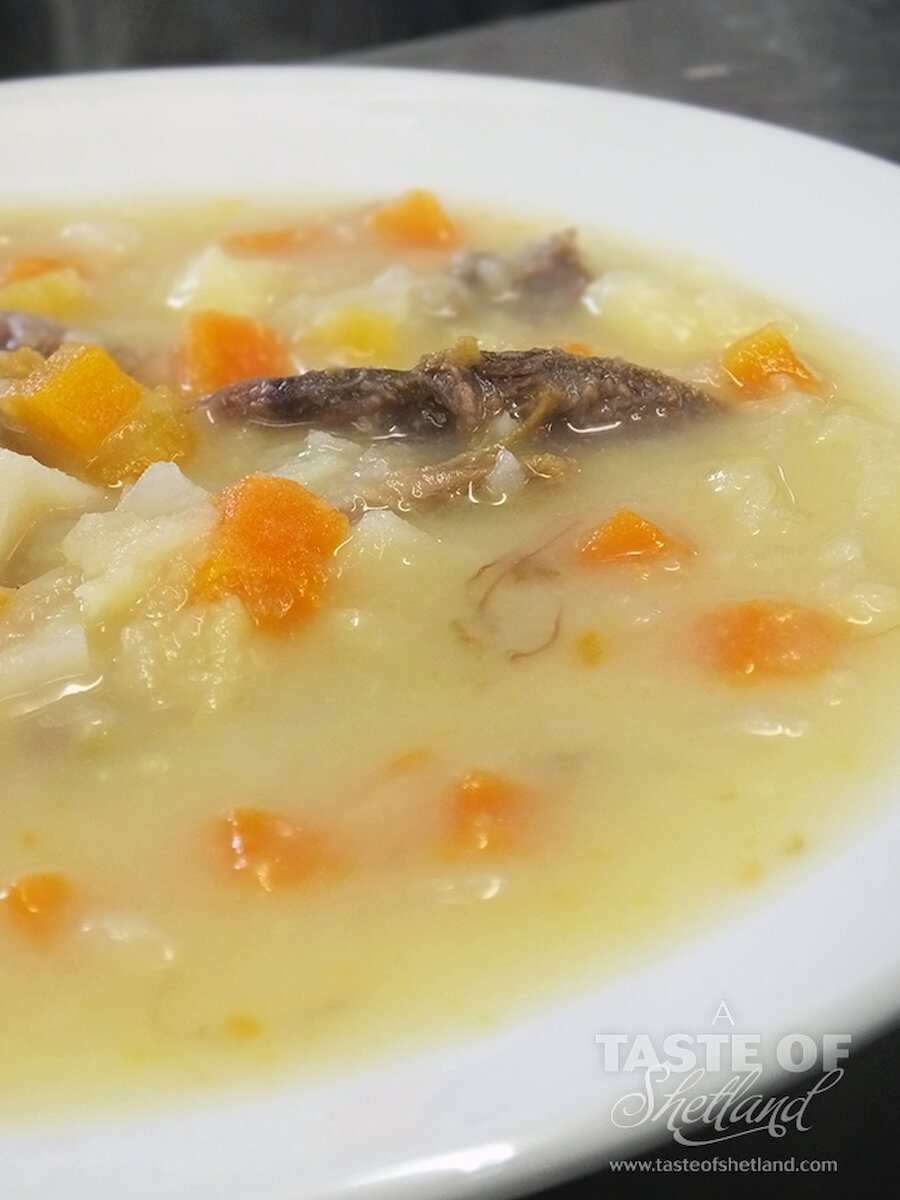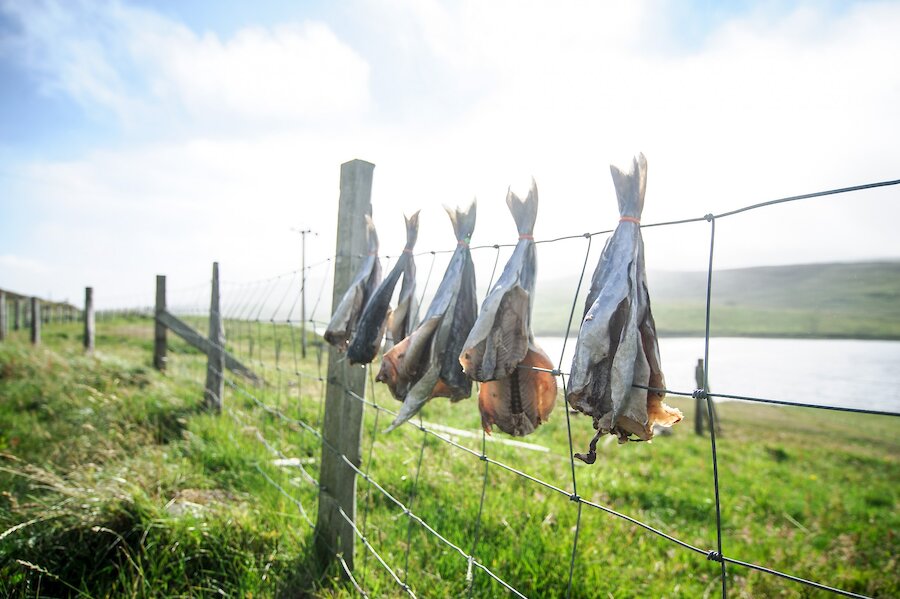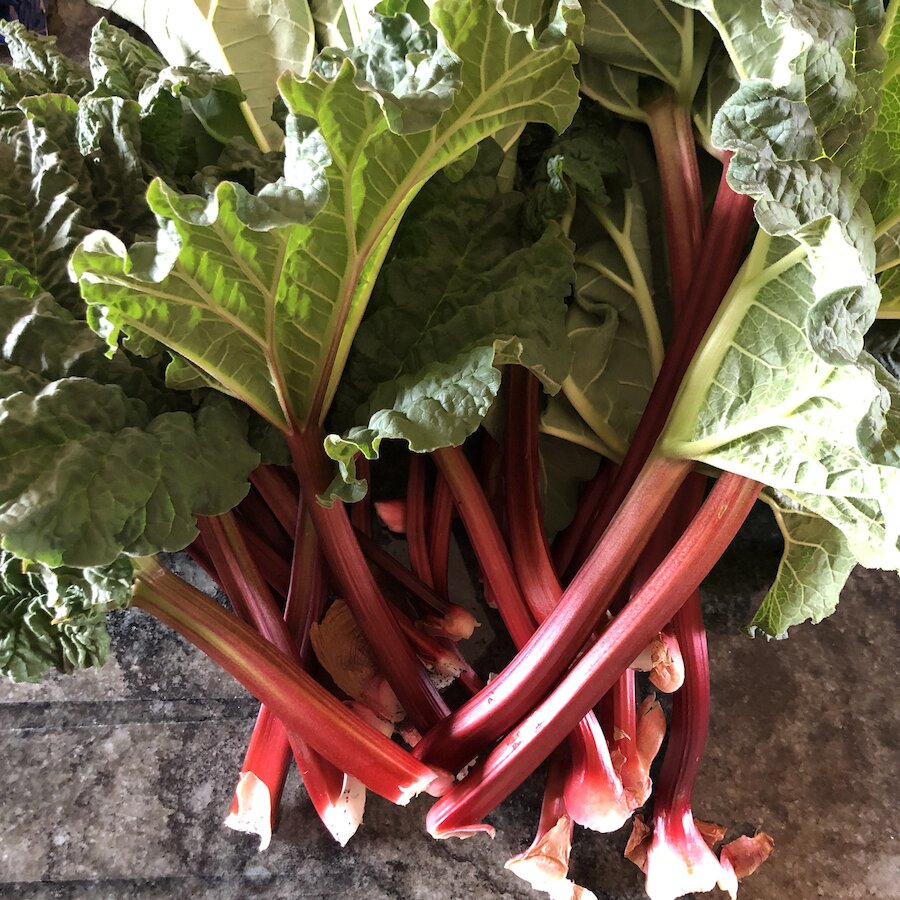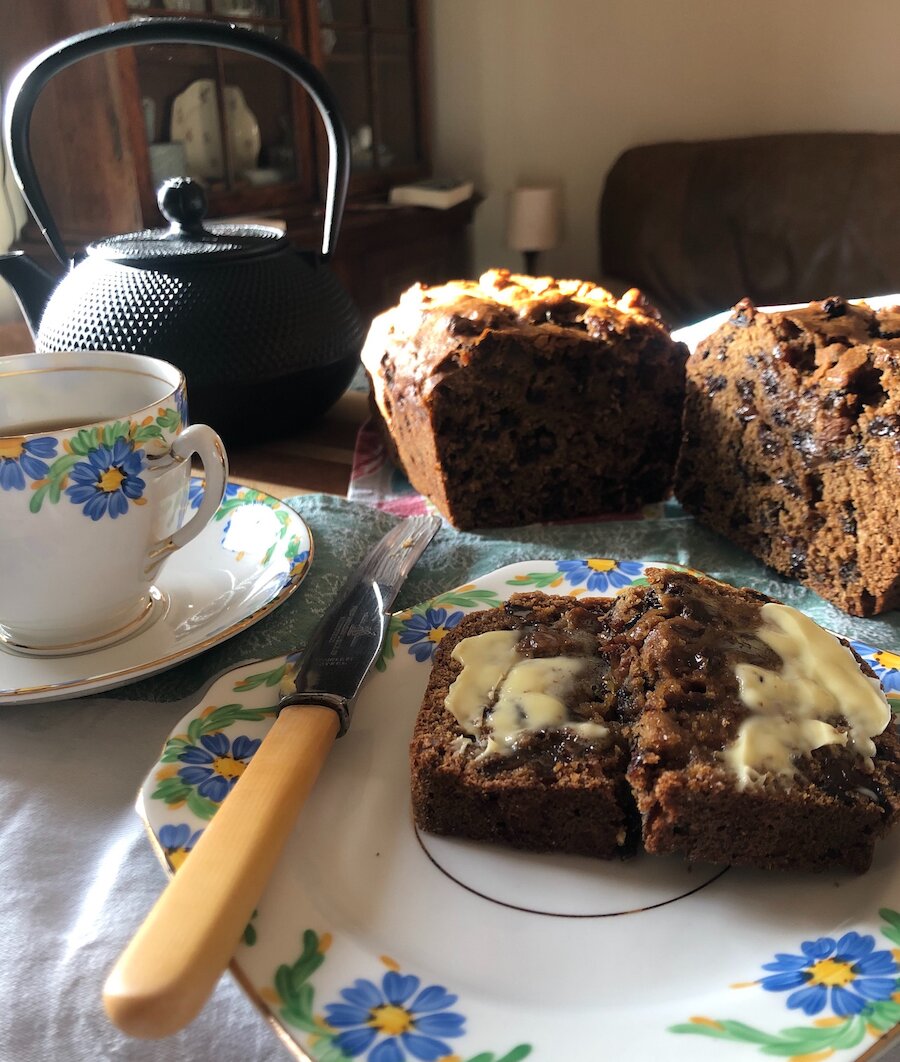Krappin an’ Stap
This is perhaps a more outlandish recipe and one that is not as common as it would have been in the past. However, for many true Shetlanders, this is the highlight of the foodie calendar.
This is another fish classic, involving a mixture of fish, oatmeal and fish livers (usually olick or piltock), stuffed into the cleaned head of a fish, and is generally an acquired taste!
I must admit that this is one that I don’t really relish. I can cope with the fish head and the oatmeal, but the liver is not for me – although I don’t particularly enjoy any liver dish so this is perhaps a matter of personal preference. However, it’s probably the one dish that really makes my dad’s mouth water.
Sunday Denner
This is another that is perhaps borrowed from our mainland UK neighbours. Shetlanders love a good roast dinner. Think Thanksgiving every Sunday, and you’ll get an idea of what’s involved!
Lamb or mutton are generally used for the traditional Shetland Sunday dinner as it is readily available – sheep are the most common livestock reared here. It's unusual to find a freezer without a leg or two buried at the bottom!
Again, simplicity is key, slow-roasted lamb served with tatties, and seasonal vegetables is unbeatable. I like to give my lamb a good glug of red wine and some garlic, thyme and rosemary as it cooks to really make it sing – not only does it leave a homely, welcoming smell in the kitchen, but it tastes divine too.
Shetland lamb has a distinct and unique flavour; this comes from the grazing the sheep enjoy: salt-misted heathery hills, green infields and the tangy shoreline all add to the taste of this delicate meat.





